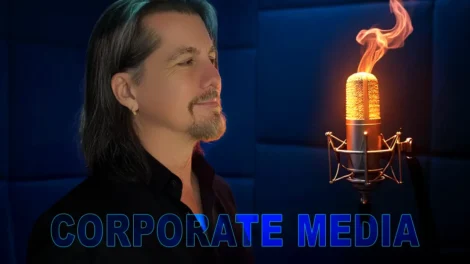Medical narration is a highly specialized field that requires a unique combination of skills, knowledge, and sensitivity. Whether it’s corporate in-house videos, surgeon instructional videos, or patient information videos, the role of the narrator is crucial in delivering accurate, clear, and engaging content. In this blog post, we’ll explore the complexities of medical narration and the key considerations for each type of video.
Corporate In-House Videos:
When it comes to corporate in-house videos for medical companies, the narrator must strike a balance between professionalism and relatability. These videos often serve to educate and inform employees, stakeholders, and partners about the company’s mission, values, and products. The narrator’s tone should be authoritative yet approachable, conveying a sense of expertise while fostering a connection with the audience.
One of the challenges in corporate medical narration is navigating the complex terminology and jargon associated with the medical field. The narrator must be able to articulate these terms clearly and confidently, ensuring that the information is accessible to viewers who may have varying levels of medical knowledge. Additionally, the narrator must be mindful of the company’s branding and messaging, ensuring that the vocal delivery aligns with the overall tone and style of the organization.
Surgeon Instructional Videos:
Surgeon instructional videos are perhaps the most technically demanding type of medical narration. These videos are designed to guide surgeons through complex procedures, providing step-by-step instructions and visual aids. The narrator’s role is to deliver the information in a precise, concise, and easily understandable manner, allowing surgeons to follow along and execute the procedure effectively.
To excel in this type of medical narration, the narrator must have a deep understanding of the surgical procedure being demonstrated. This often requires extensive research and collaboration with medical professionals to ensure accuracy and clarity. The narrator must also be able to maintain a steady, measured pace, allowing sufficient time for the surgeon to absorb the information and follow the instructions.
One of the key challenges in surgeon instructional videos is striking the right balance between detail and brevity. The narrator must provide enough information to guide the surgeon through the procedure without overwhelming them with unnecessary details. Additionally, the narrator must be able to adapt to the visual elements of the video, synchronizing their delivery with the on-screen actions and illustrations.
Patient Information Videos:
Patient information videos are designed to educate and empower patients, helping them understand their conditions, treatments, and self-care strategies. The narrator’s role in these videos is to present complex medical information in a way that is accessible, relatable, and reassuring to patients and their families.
One of the primary challenges in patient information videos is translating medical jargon into layman’s terms. The narrator must be able to explain complex concepts in a way that is easily understandable to a non-medical audience, without oversimplifying or losing the essential information. This requires a deep understanding of the subject matter, as well as the ability to communicate in a clear, concise, and empathetic manner.
Another important consideration in patient information videos is tone and delivery. The narrator must be able to convey a sense of warmth, compassion, and understanding, acknowledging the emotional impact of the information being presented. The vocal delivery should be calm, reassuring, and encouraging, helping patients feel informed and empowered in their healthcare journey.
Medical narration is a complex and multifaceted field that requires a unique set of skills and expertise. From corporate in-house videos to surgeon instructional videos to patient information videos, the narrator plays a critical role in delivering accurate, clear, and engaging content. To excel in this field, narrators must have a deep understanding of medical terminology, the ability to adapt to different styles and tones, and the sensitivity to connect with diverse audiences.
As the demand for high-quality medical content continues to grow, the role of the medical narrator will become increasingly important. By mastering the intricacies of medical narration, voice over artists can make a meaningful contribution to the healthcare industry, helping to educate, inform, and empower patients, professionals, and organizations alike.





















































